What is Impulse Purchase?

Impulse purchases are unplanned decisions by consumers to buy products or services just before making a purchase.
These spontaneous buying actions often arise from emotions, feelings, and attitudes, influenced by seeing the product or promotional messages.
Initially defined in the DuPont Consumer Buying Habits Study (1948-1965), the concept evolved to focus on consumer urges and the conflicts between rational decision-making and emotional desires.

Various types, including
- Pure Impulse Buying
- Reminder Impulse Buying
- Suggestion Impulse Buying
- Planned Impulse Buying
highlight different triggers and circumstances for these purchases.
The psychology behind impulse purchases involves disrupting normal decision-making processes, often leading to purchases that may not be functional or necessary.
Factors like cultural values, environmental over-stimulation, and disorganized settings influence impulse buying behavior, affecting everything from small items at checkout aisles to large purchases like automobiles.
Explanation with Concrete Examples!
Black Friday Shopping Spree

Imagine Yuya-san, a savvy shopper, eagerly awaiting the Black Friday sales.
As the doors of the shopping mall open, Yuya-san, along with a sea of other shoppers, rushes in, drawn by the allure of heavy discounts and exclusive deals.
Amidst the frenzy, Yuya-san spots a high-end camera at a significantly reduced price, a deal too good to pass up.
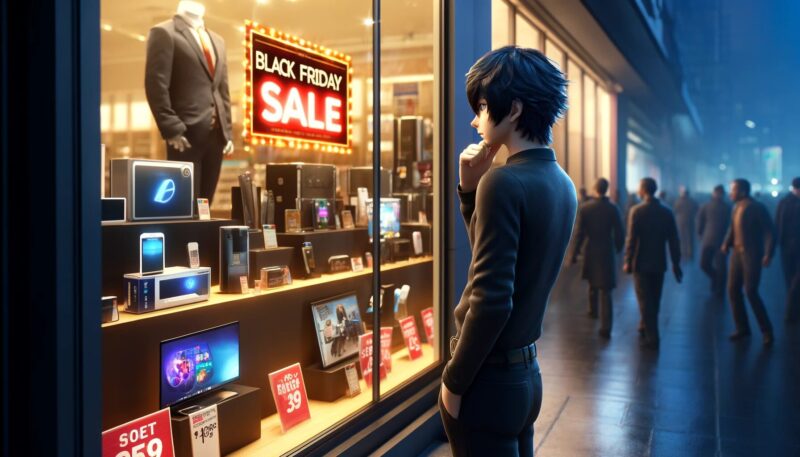
Even though he hadn’t planned on buying a camera, the excitement of the sale and the fear of missing out (FOMO) compel him to make the purchase impulsively.
This scenario exemplifies impulse buying during Black Friday sales, where the atmosphere of urgency and the temptation of deals can override rational decision-making.
Online Flash Sales
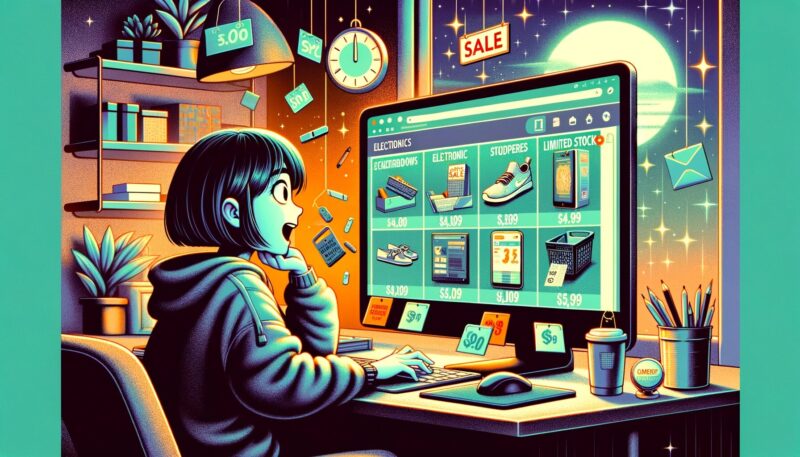
In this story, we meet Akira, a young professional who loves shopping online.
One evening, while browsing social media, Akira stumbles upon an advertisement for an online flash sale.
The sale promises huge discounts for a limited time only.
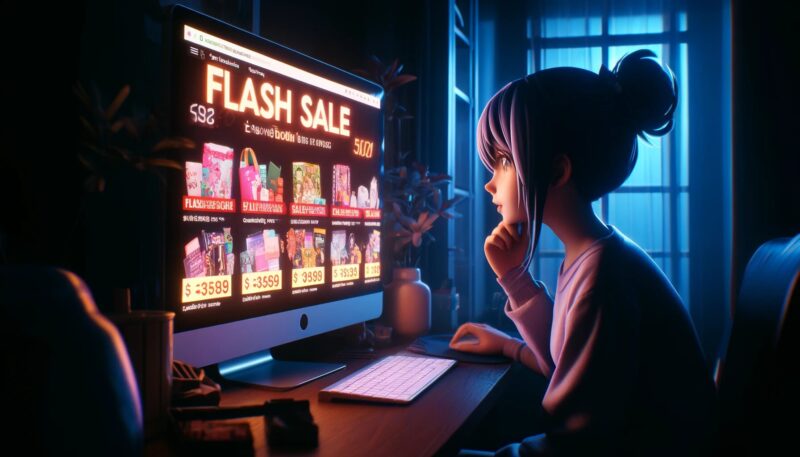
Intrigued and excited by the opportunity to snag a great deal, Akira clicks on the link, which takes her to a website bustling with countdown timers and limited-stock notices.
She quickly starts adding items to her cart – a new phone she had been eyeing, a pair of designer shoes, and some kitchen gadgets – all heavily discounted.
The urgency of the sale and the fear of missing out on these deals lead Akira to make these unplanned purchases, a classic example of impulse buying driven by online flash sales.
Supermarket Checkout Line Temptations
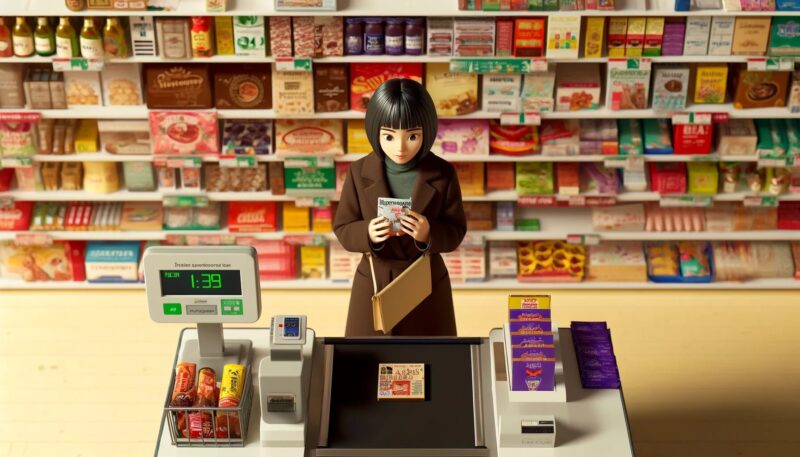
Let’s imagine a scenario involving Keiko, a meticulous planner who goes grocery shopping with a detailed list.
As Keiko approaches the checkout line at the supermarket, she notices an array of tempting items conveniently placed near the register.
There are magazines, chocolates, and small gadgets, all within easy reach.

Although none of these items were on her original shopping list, the clever placement and the appeal of a quick treat catch her attention.
Keiko ends up adding a few of these items to her basket, succumbing to the classic impulse purchase.
This situation showcases how supermarkets strategically place products near the checkout to entice customers into making last-minute, unplanned purchases.
Summary
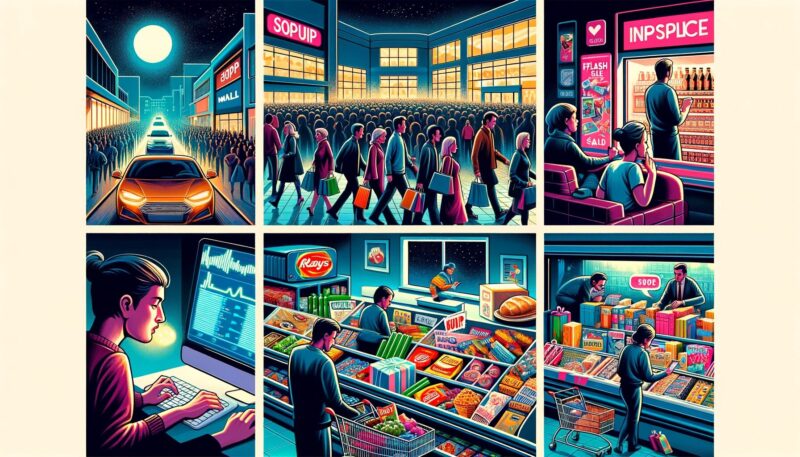
The concept of impulse purchases encompasses unplanned buying decisions made by consumers just before a purchase, often influenced by emotions and the immediate appeal of the product or promotional messages.
Examples like the Black Friday Shopping Spree, Online Flash Sales, and Supermarket Checkout Line Temptations vividly illustrate different scenarios where impulse buying occurs.
In each case, consumers are drawn into making spontaneous purchases due to various factors like discounts, the urgency of sales, or strategic product placement.
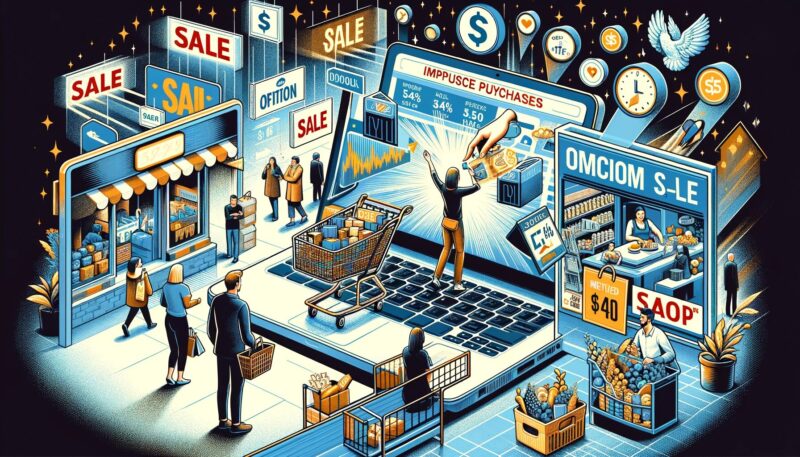
Impulse purchases often disrupt normal decision-making processes, leading to acquisitions that might not be necessary or functional.
The psychological aspect involves a complex interplay of emotions, desires, and environmental factors.
Cultural values, over-stimulation, and disorganized settings can further influence this behavior, making consumers susceptible to impulse buying in different settings – from crowded malls to the comfort of their homes during online sales.
This article uses material from the Wikipedia article “Impulse Purchase” which is released under the Creative Commons Attribution-Share-Alike License 4.0. Additionally, the texts and images were generated using ChatGPT.


